Physical Address
304 North Cardinal St.
Dorchester Center, MA 02124
A congenital abnormality where drainage of the kidney is via two collecting systems (occurring in 3% of individuals)
Partial < complete
Bilateral > unilateral
Complete duplication
The ureters draining the two moieties never join
Classically the upper moiety ureter obstructs (its ectopic ureteral orifice is often stenotic) and the lower moiety ureter tends to demonstrate vesicoureteric reflux (due to an incompetent valve)
The upper moiety ureter usually enters the bladder as a ureterocele ▸ such ectopic drainage is almost always associated with dysplastic function of the upper moiety of the kidney
Weigert–Meyer rule: the upper moiety ureter inserts into the bladder inferomedial to the lower moiety ureter
Other ectopic insertions of the upper ureteric moiety: bladder neck ▸ posterior urethra ▸ seminal vesicle or ejaculatory duct ▸ vagina
Incomplete duplication
The two ureters join at any level above the bladder
‘Yo-yo’ reflux: this may occur if urine refluxes from one ureteric moiety into the other (rather than draining into the bladder) if there is ureteric duplication above the bladder – a septated renal pelvis is the mildest variant of this condition
Asymptomatic ▸ the development of a UTI
Pain: secondary to intermittent obstruction at the PUJ level of the lower moiety or due to ‘yo–yo’ reflux with incomplete duplication
Continuous wetting in a girl: due to an ectopic insertion of the upper moiety into the vagina
Vaginal prolapse: the ureterocele prolapses out of the bladder
Bladder neck obstruction: following prolapse of a ureterocele
One of the cardinal signs of a duplex system is a change in the axis of the lower moiety
The lower moiety calyces are medial to the upper moiety calyces (giving the lower moiety of the kidney a longitudinal axis which points to the ipsilateral shoulder)
A duplex kidney is longer than normal in bipolar length (for an uncomplicated duplex) ▸ the kidney may simply show two distinct renal pelves
Upper moiety: this is usually dilated ▸ this may be normal, small, or dysplastic ▸ it may be anechoic and resemble a ‘cyst’ (which is an obstructed ureterocele) ▸ these findings are generally associated with a dilated ureter
Lower moiety: in complete duplication the lower moiety may be normal and difficult to recognize ▸ the calyces and pelvis of a lower moiety may be dilated with no ureteric dilatation (suggesting a PUJ stenosis) ▸ reflux is likely when a dilated ureter is seen
Ureterocele: this is seen at the bladder base if it is intravesical ▸ it can be so large as to be mistaken for a bladder
‘Drooping lily’ sign: an obstructed upper pole moiety will not opacify – the opacifying lower pole moiety will be displaced inferiorly by the mass effect from the obstructed and enlarged upper pole moiety
This will assess the function, drainage, and the presence of any reflux (especially with late images) ▸ if a moiety is non-functional it will not be visualized (this is important to recognise when there is a small severely dysplastic upper moiety) ▸ with incomplete duplication the upper and lower moieties may be normal or there may be reduced function of either element
‘Yo-yo’ reflux is seen with an incomplete duplication
A ureterocele appears as a filling defect along the posterolateral wall of the bladder on early images (this will be obliterated once the bladder is full of contrast medium)
VUR may be detected (usually into the lower moiety) ▸ reflux into the upper moiety is rarely detected
A submucosal dilatation of the intramural distal ureter, which often projects into the bladder lumen ▸ it is usually associated with the upper moiety ureter of a duplex system (and may obstruct the ipsilateral lower moiety ureter)
It may also prolapse into the urethra (causing bladder outlet obstruction) or present as a labial and interlabial mass
Ureteroceles that are not associated with a duplex system tend to be small and are not associated with significant obstruction (unless complicated by calculi)
A ‘cobra's head’ appearance: a contrast-filled structure (the ureterocele cavity) with a thin radiolucent wall (the ureterocele wall) surrounded by contrast within the bladder
A thin-walled cystic structure projecting into the bladder lumen
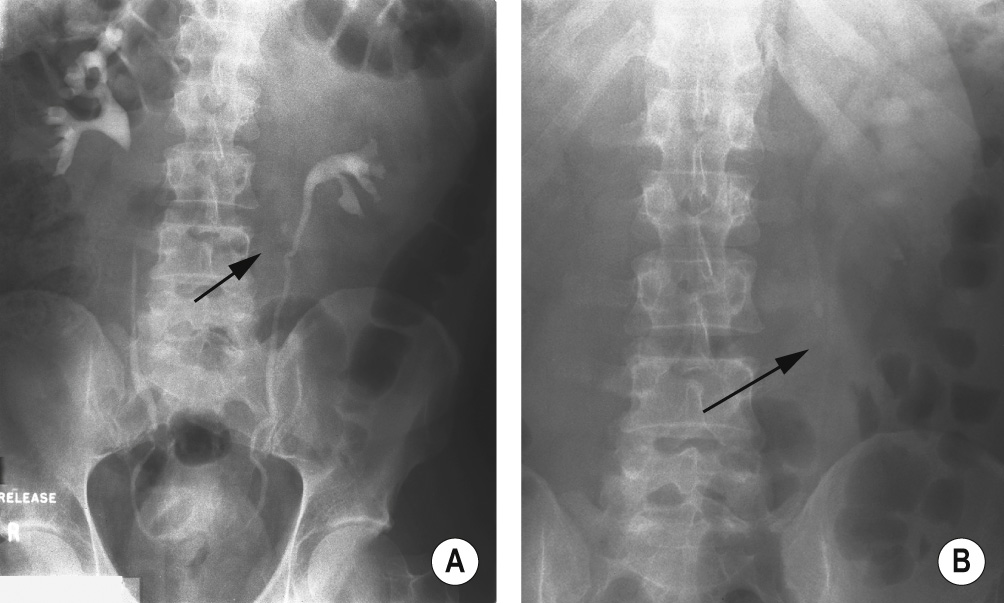
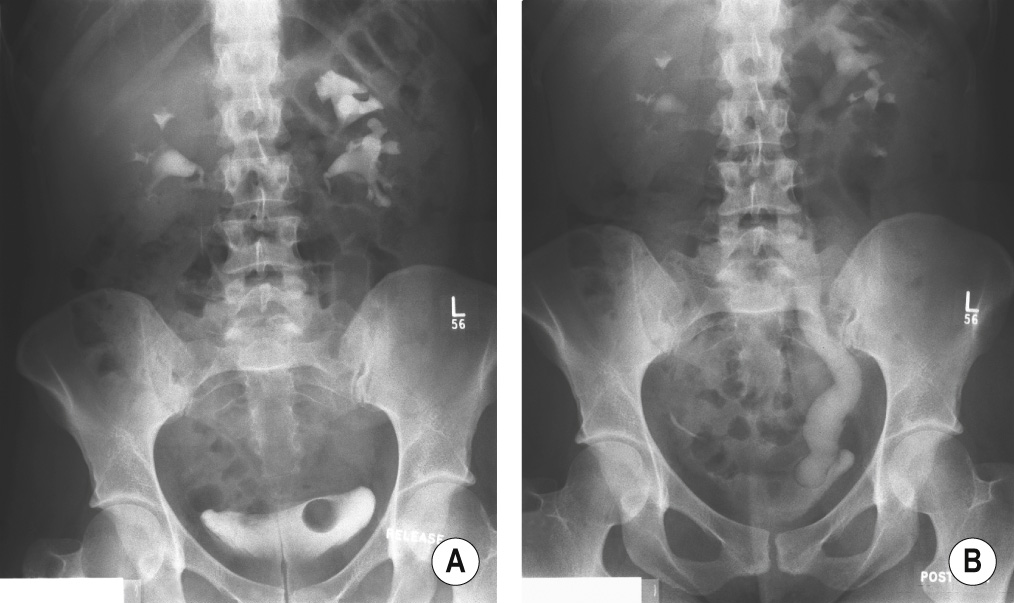
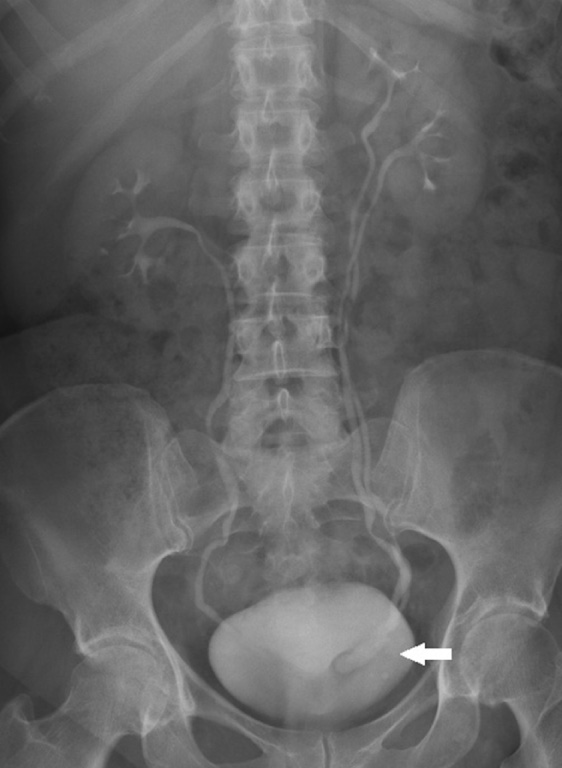

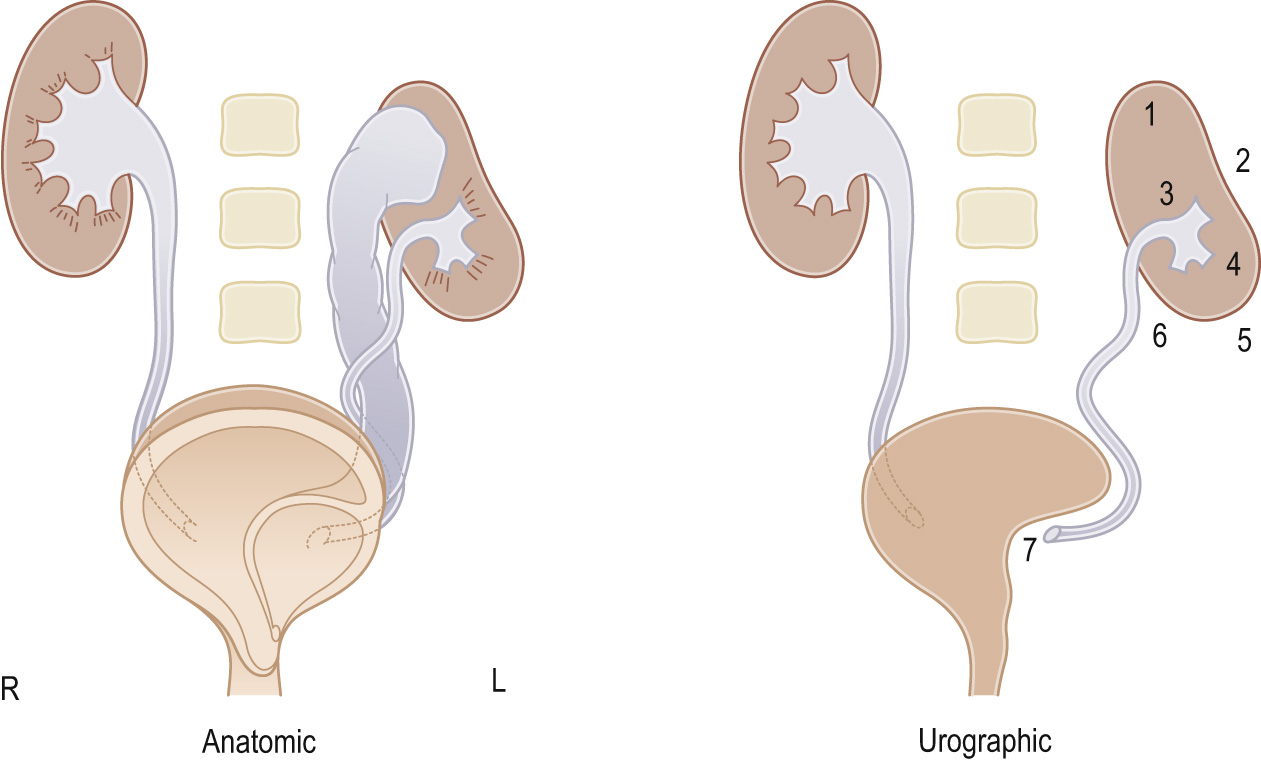
A common renal anomaly (affecting 1:400 live births and M > F) whereby in utero contact between the metanephric tissue of the developing kidneys results in a midline connection (isthmus) between the lower poles ▸ the isthmus may be anything from a fibrous band, to more commonly a block of renal tissue
The ascent of the fused kidney is arrested by the inferior mesenteric artery during development, resulting in a low abdominal position (the isthmus lies anterior to the aorta and IVC but posterior to the inferior mesenteric artery) ▸ its abnormal position makes it more susceptible to injury
It is always associated with malrotation so that the pelves and ureters pass anteriorly over the fused lower poles
Associations: PUJ obstruction (30%) ▸ duplicated ureter (10%) ▸ medullary sponge kidney ▸ anorectal and musculoskeletal anomalies
Complications: renal pelvic dilatation (± PUJ obstruction) ▸ renal calculi or infection ▸ there is an increased risk of renal tumours (e.g. a Wilms' tumour) ▸ may be associated with trisomy 18 (Edwards' syndrome) and Turner's syndrome
This may not detect the abnormal axes of the kidney
An anterior view is useful to show all functioning renal tissue (especially over the spine)
These can easily demonstrate a horseshoe kidney (the upper poles point superolaterally, the lower poles inferomedially)
A rare fusion anomaly whereby both kidneys have failed to ascend from the pelvis and have fused
One kidney is displaced across the midline and is fused inferiorly to the other relatively normally positioned kidney (both ureters enter the bladder in a normal position) ▸ there is an increased incidence of VUR into the crossed kidney
It may present as an abdominal mass or as an obstructive uropathy with a PUJ obstruction ▸ it is more common on the right (M>F) – the left kidney is more commonly the ectopic kidney
An unusually large kidney on the affected side and an absent kidney on the opposite side
This is performed if surgery is being considered for a PUJ obstruction
Patchy uptake of the isotope owing to the anatomical abnormality and dysplasia that exists to some degree
This may provide further anatomical information
Occurs when bilateral pelvic kidneys fuse
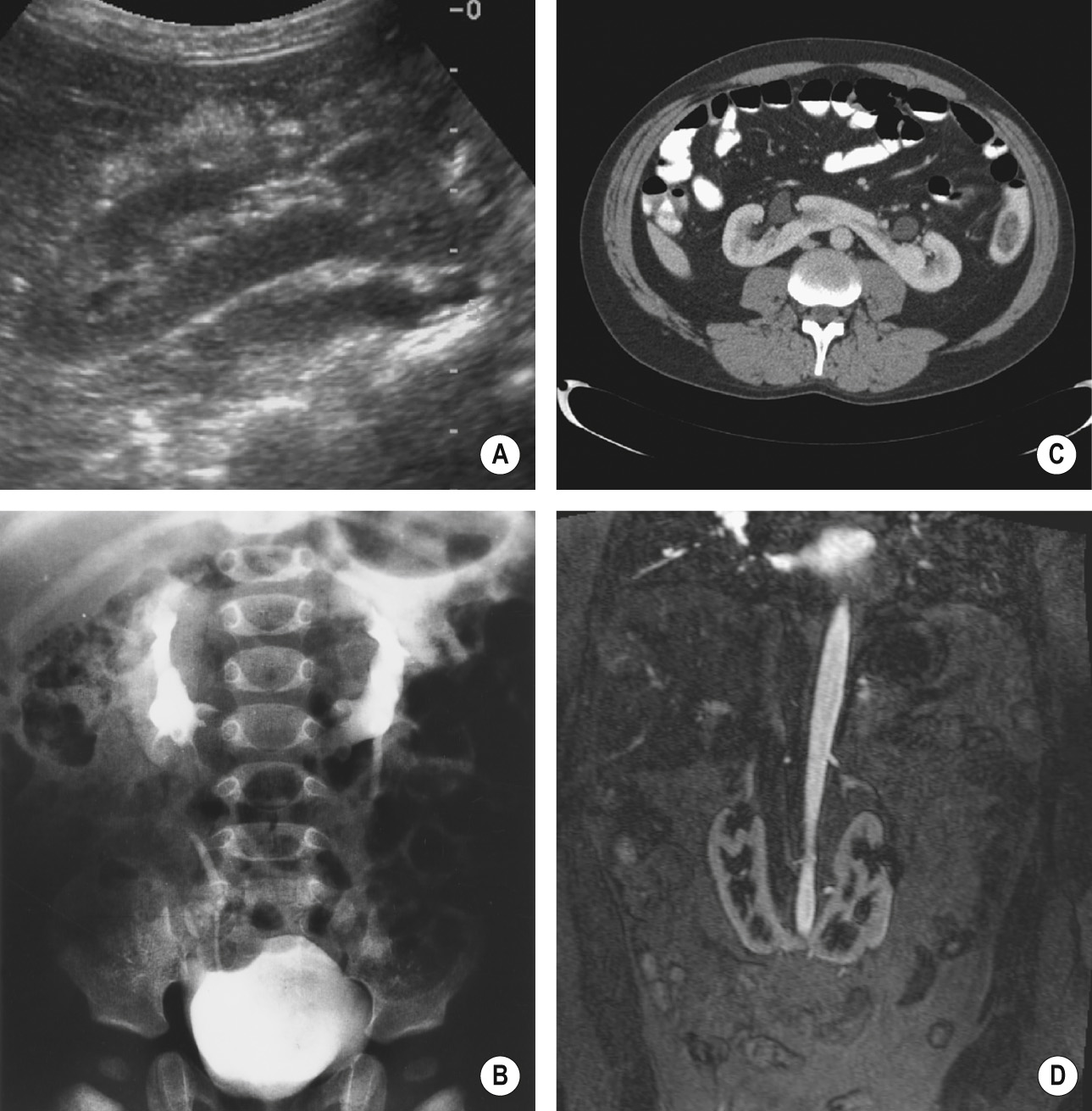
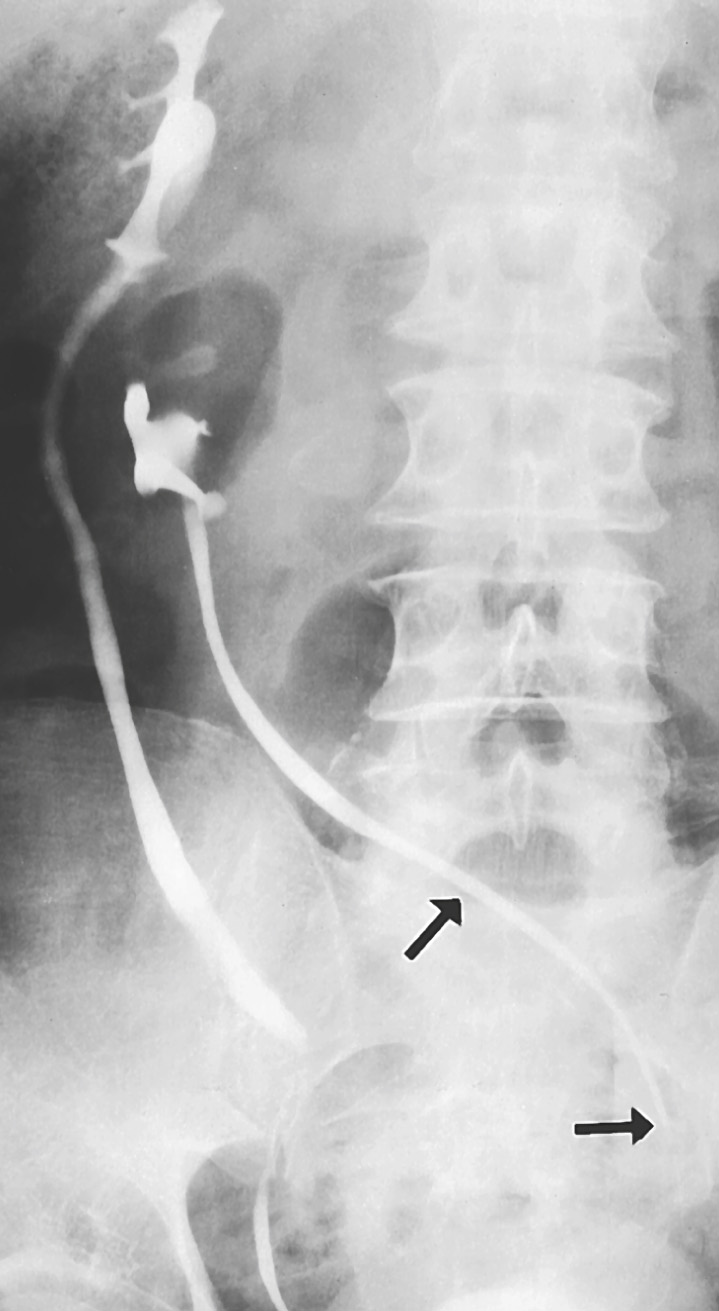
The upper pole of the kidney is located more laterally than the lower pole (the upper pole calyces are therefore lateral to the lower pole calyces) ▸ a malrotated kidney may develop urological complications, be more susceptible to trauma, or indicate that pathology in an adjacent organ is displacing the kidney
Failure of complete ascent: this results in a pelvic kidney (the majority) ▸ there is an increased risk of trauma, VUR and calculus formation (due to urinary stasis)
Overascent: this is almost always limited by the diaphragm but if there is eventration of the diaphragm or a Bochdalek hernia an intrathoracic kidney may result ▸ this can resemble a posterior mediastinal mass
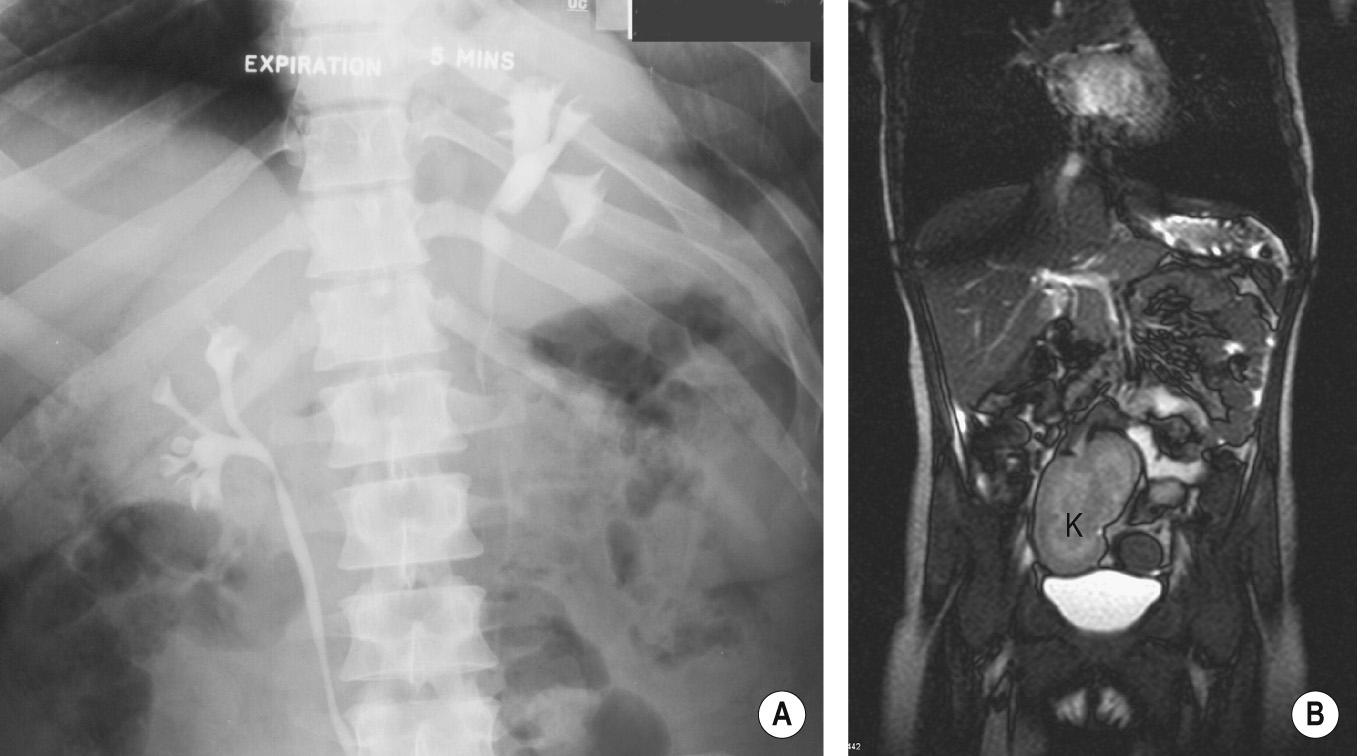
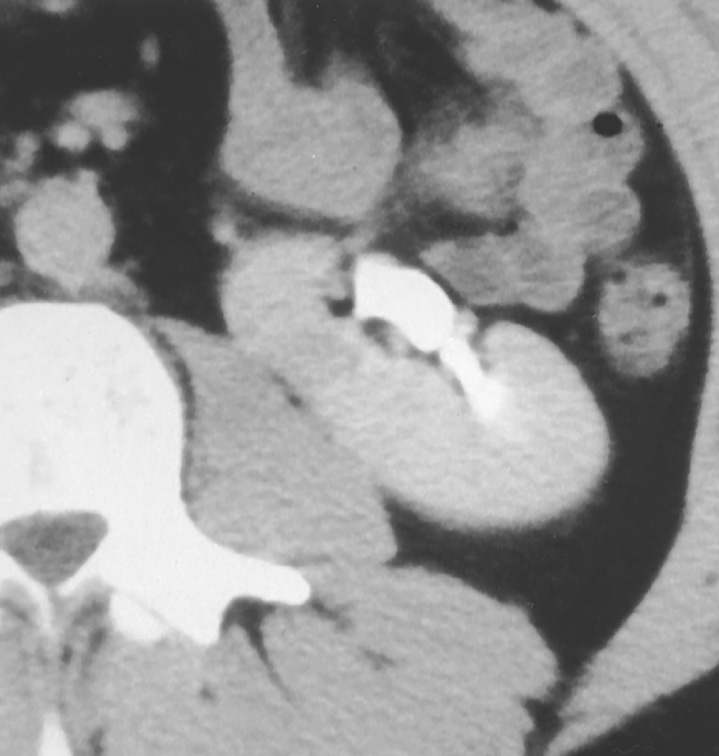
This follows failure of the ureteric bud to reach the metanephros (affecting 1 in 1250 live births) ▸ the ipsilateral ureter and hemitrigone fail to develop but occasionally a ureteric stump may remain ▸ as an antenatal diagnosis is uncommon this suggests that agenesis may represent an involuted multicystic kidney ▸ bilateral renal agenesis is incompatible with life
It can be difficult to differentiate between unilateral agenesis and a small non-functioning kidney (especially if it is ectopically located)
Ipsilateral urogenital abnormalities are common (absence of the vas deferens or absence of the seminal vesicle) ▸ cardiovascular, gastrointestinal and musculoskeletal anomalies ▸ the VATER syndrome
Females with renal agenesis have a 70% incidence of Müllerian anomalies (vaginal/uterine agenesis, or unicornuate uterus which are part of Mayer–Rokitansky–Küster–Hauser syndrome)
Bilateral renal agenesis results in Potter's syndrome consisting of oligohydramnios, pulmonary hypoplasia and facial abnormalities (low set ears/broad flat nose/prominent infraorbital skin folds)
There is compensatory hypertrophy of the normal contralateral kidney
This can exclude a small ectopic kidney
An autosomal dominant condition characterized by multiple hamartomas in the brain, skin, kidneys, liver, lungs and heart (e.g. a cardiac rhabdomyosarcoma)
Renal manifestations: this is most commonly an angiomyolipoma (AML) ▸ renal cysts or a renal carcinoma can also be present
If renal cysts are found in a child < 5 years with no family history, tuberous sclerosis must be excluded
Multiple cysts (similar to ADPKD) ▸ during later childhood there may be multiple small rounded echogenic foci throughout the renal parenchyma representing multiple AMLs (with an increased risk of haemorrhage if an AML is > 4 cm)
Multiple fat-containing renal masses
This is extremely rare ▸ it is usually left sided, hypoplastic and caudally positioned
This represents a prominent column of Bertin (cortical tissue that separates the pyramids) ▸ it is usually located at the junction of the upper and middle ⅓ of the kidney ▸ it may be mistaken for a renal mass and is associated with a bifid renal pelvis consisting of two pelvices joined proximal to the ureteropelvic junction – the upper calyces drain into the upper pelvis, while the mid and lower calyces drain into the lower pelvis ▸ the ureters may also join distal to the ureteropelvic junction with a Y configuration (which is usually asymptomatic unless there is ‘yo-yo’ reflux precipitating recurrent infections)
This represents a prominent superolateral border of the left kidney (due to compression by the adjacent spleen) ▸ it may be mistaken for a renal mass
There is increased renal sinus fat
Renal tissue develops as a series of 8–16 lobules and the lobulated structure persists at birth – this feature normally disappears over the first 5 years of life as the kidney grows
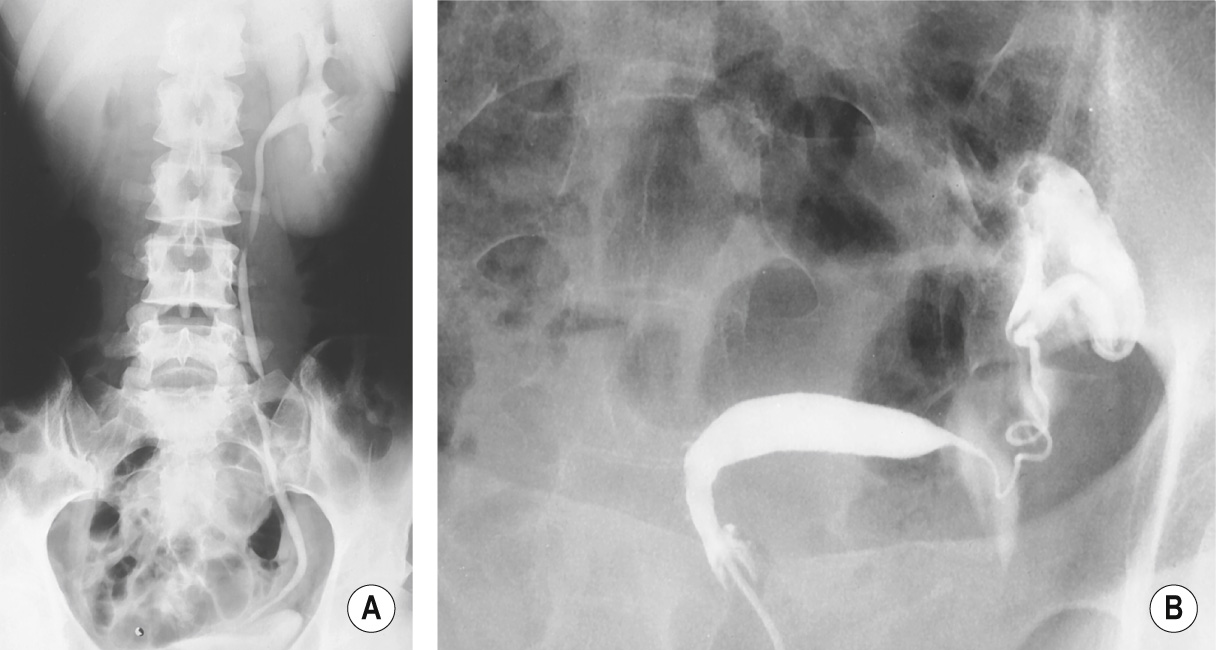
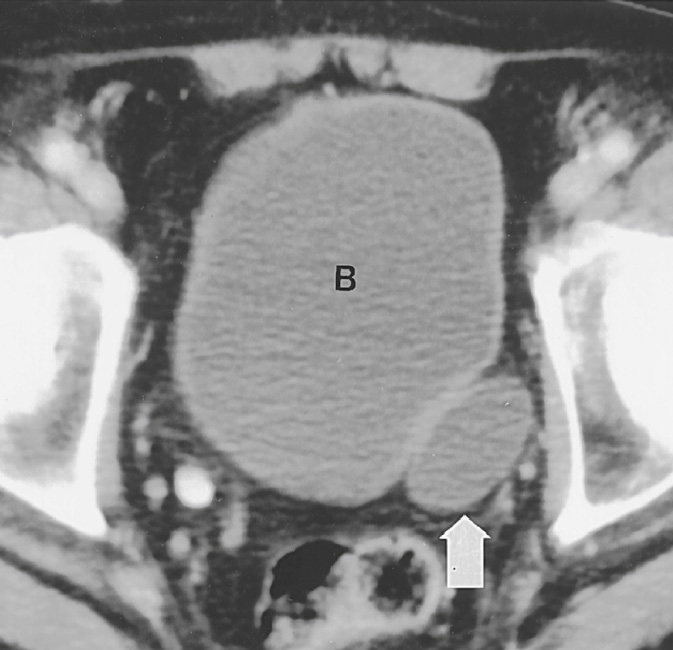
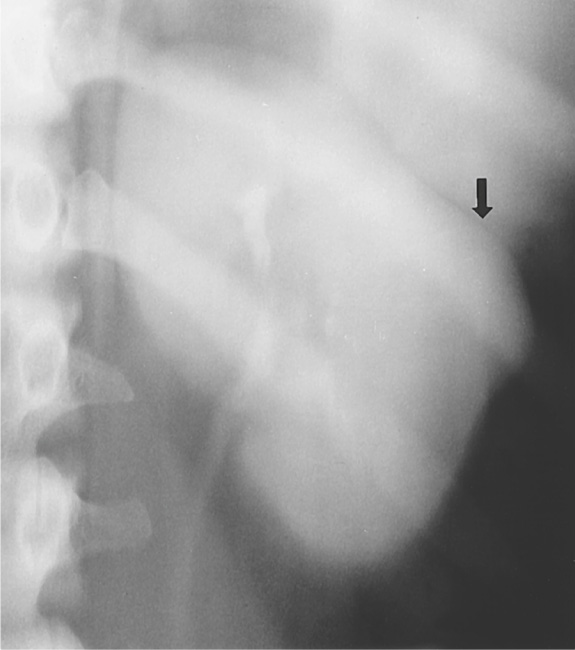
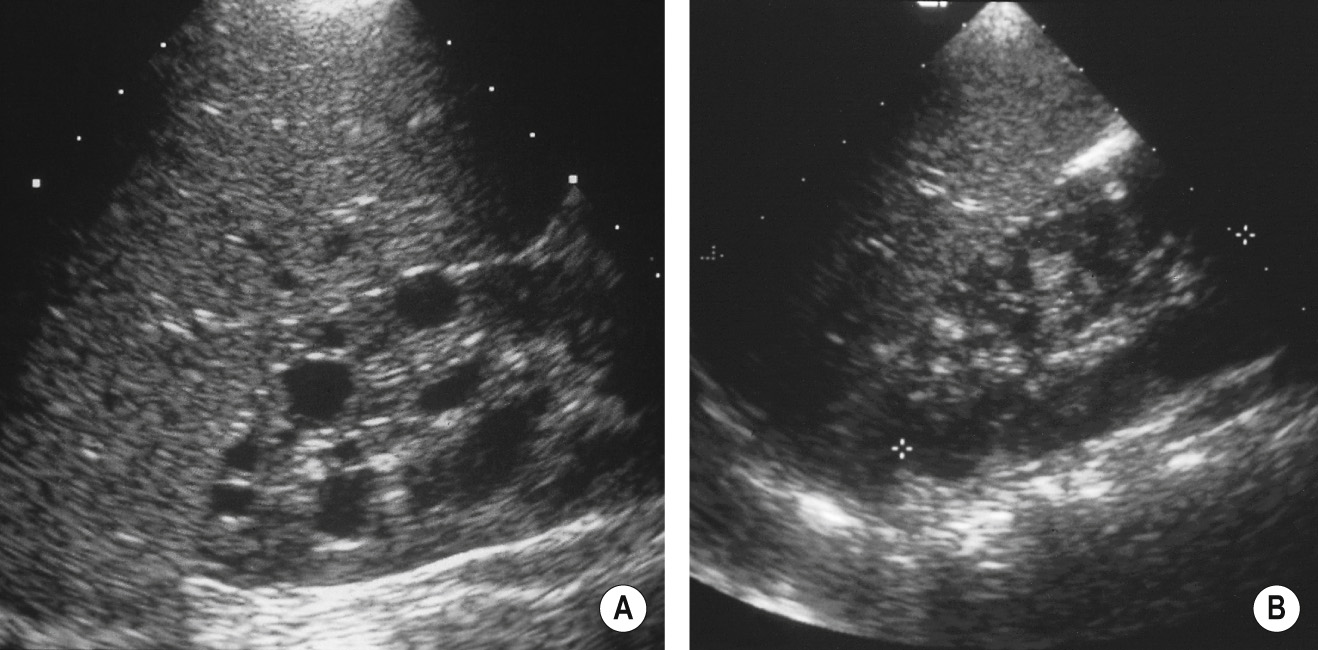
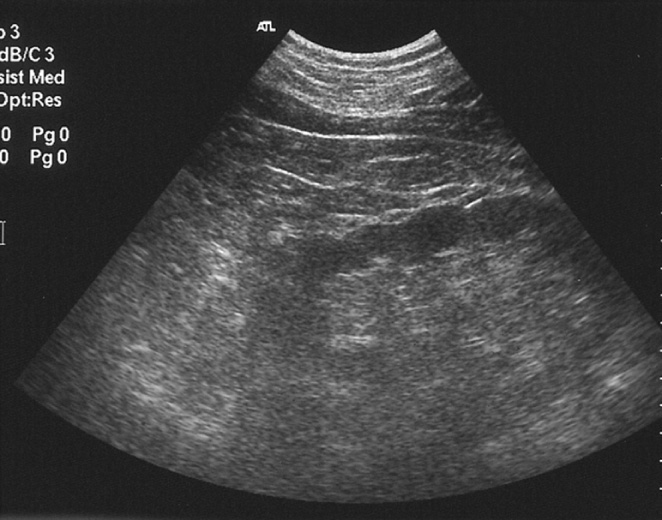
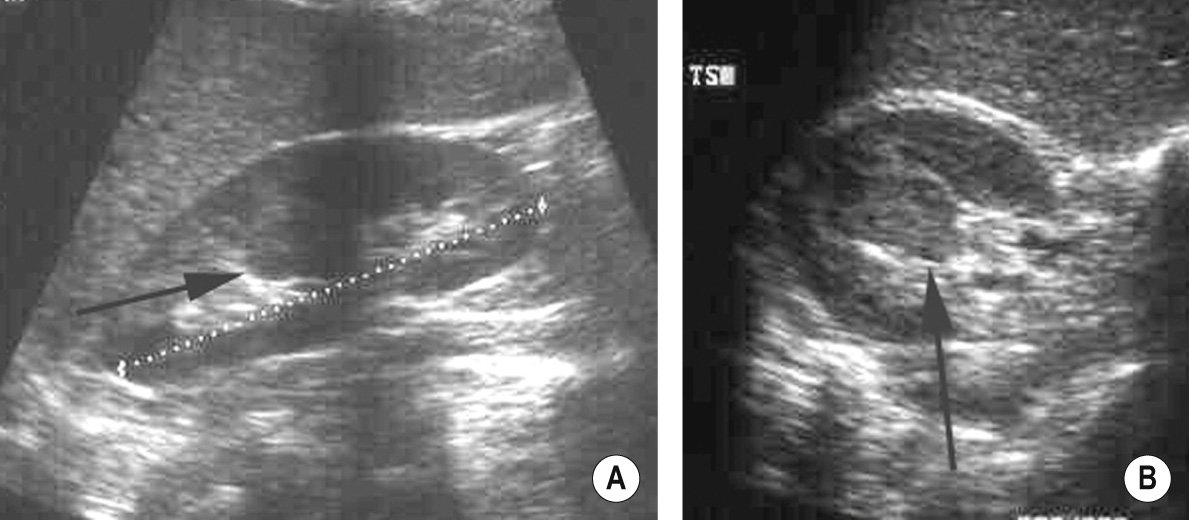
Become a Clinical Tree membership for Full access and enjoy Unlimited articles
If you are a member. Log in here